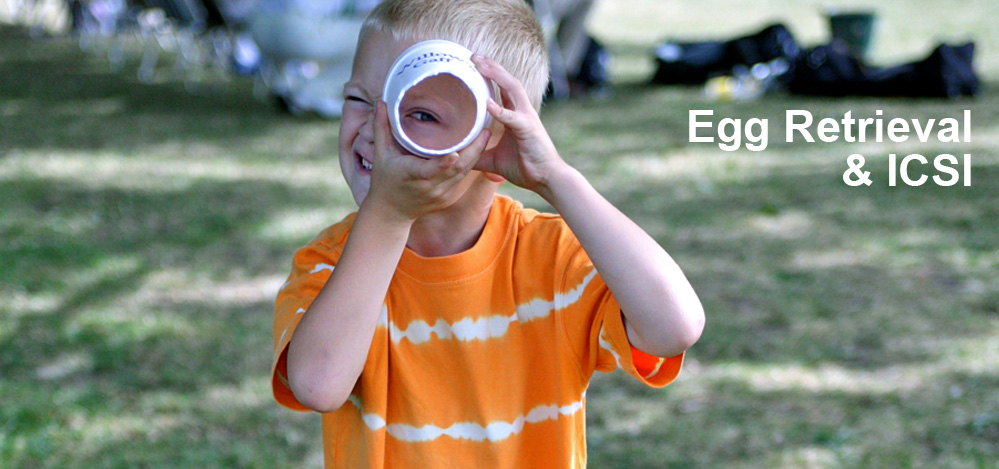
Assisting the fertilization of an egg
ICSI (intracytoplasmic sperm injection) is quite an effective treatment for male infertility and for couples who may have poor fertilization results through standard IVF. ICSI involves an egg retrieval from the woman, then a sperm is prepared and injected directly into the egg by the embryologist in the IVF lab.
If you have never had a pregnancy, if there are few normal sperm, if the sperm have reduced motility, or if there has been a low rate of fertilization in a prior IVF cycle, ICSI may improve the chances of fertilization. Before the fertilization procedure can begin, eggs will need to be obtained from the woman through egg retrieval.
Egg Retrieval
ICSI begins with egg retrieval. We start with ovulation induction, possibly prescribing a combination of oral and/or injectable medications to stimulate the ovaries to develop multiple follicles and eggs.
Just before the eggs are ready to be released from the ovary, we will retrieve them in our operating suite while you are under IV anesthesia. Using a vaginal ultrasound scan as a guide, the doctor inserts a needle into the ovary and aspirates the eggs from the follicles. The embryologist then works with the eggs in our state-of-the-art embryology lab where they will be monitored in a very carefully controlled environment, evaluated for maturity, and prepared for the ICSI procedure.
ICSI
For many couples with infertility issues, ICSI (intracytoplasmic sperm injection) can greatly improve their outcomes. In fact, the majority of normal eggs injected using this procedure successfully fertilize. If you have male infertility factors, including low sperm count, sperm motility issues, or abnormal sperm quality or form or if you have had previous IVF procedures without acceptable fertilization or you have few eggs, we may recommend ICSI to improve your chances of a positive outcome.
IVF with ICSI involves the use of micromanipulation. Our embryologist inspects and selects individual sperm that are picked up one at a time using a specially designed ICSI needle. The ultrafine microglass needle containing the sperm is then carefully inserted through the egg’s outer shell and membrane and the sperm is injected into the cytoplasm of the egg. The needle is then withdrawn. The embryologist will repeat this procedure on each mature egg. Once the eggs have been inseminated, they will be checked the following day for evidence of fertilization.
Once fertilization is confirmed, embryos that have potential to produce a pregnancy may be transferred to the uterus using a flexible catheter. In all cases where ICSI has been utilized to accomplish egg fertilization, we recommend assisted embryo hatching prior to the embryo transfer to improve the chances of pregnancy.
Assisted Embryo Hatching
Assisted hatching is performed in all cases of ICSI, when the woman is over 35 years of age, where a previous standard IVF cycle or embryo transfer has failed, and in cases where the egg shell or zona pellicuda (a protective layer surrounding the egg) is thicker than normal. In each of these cases, assisted hatching can help to give the embryo a better opportunity to implant in the uterus.
Assisted embryo hatching is an intricate, precise procedure that requires micromanipulation. The embryo is placed in a culture solution. Then under a powerful microscope, the skilled embryologist uses a specialized holding pipette to hold the embryo. A very thin hollow glass needle is then used to create a breach in the shell to assist the embryo in hatching out of its shell. The embryo is then placed in culture media and returned to the embryo incubator to await transfer.
Once the embryologist confirms that the embryo is developing appropriately, the embryo transfer is planned. The actual day of embryo transfer is variable and depends on the specifics of each individual case.


